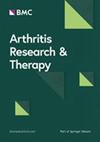TLR-M-CSF轴与青少年特发性脊柱侧凸的骨转换和弯曲进展增加有关
IF 4.9
2区 医学
Q1 Medicine
引用次数: 0
摘要
小关节骨性关节炎(OA)在青少年特发性脊柱侧凸(AIS)患者中很普遍。最明显的骨关节炎出现在椎间旋转最大的曲线顶点上方和下方。这表明小关节骨性关节炎与AIS进展有关。骨性关节炎影响软骨和骨,我们之前已经证明了AIS小关节骨质较低与更严重的骨性关节炎之间的联系。本研究旨在进一步探讨AIS患者小关节软骨-骨串扰的分子机制。进行无偏深RNA测序,比较年龄匹配的AIS患者和非脊柱侧凸个体小关节软骨细胞中的基因表达。在更大的样本队列中,通过qPCR和ELISA验证感兴趣的差异表达基因。通过生物信息学分析确定了参与软骨-骨串扰的关键调控途径。通过TLR2和TLR4激动剂处理软骨细胞,收集条件培养基,并给予体外破骨细胞生成模型,进行功能研究。M-CSF是影响破骨细胞增殖的关键调节因子,我们在不同脊柱水平的单个小关节软骨样本中测量了M-CSF的表达,并与软骨形态等级和脊柱重建中提取的3D结构参数相关。检测到1426个上调基因,基因本体分析显示,在AIS软骨细胞中,TLR通路和骨调节生物学过程显著富集。TLR激活AIS软骨细胞诱导骨调节因子的表达,包括M-CSF,这是破骨细胞增殖的关键调节因子。此外,AIS软骨细胞分泌因子促进破骨细胞增殖和成熟,在TLR预激活后观察到更强的作用。临床研究发现,M-CSF表达与骨性关节炎严重程度增加和椎间轴向旋转程度增加密切相关。总之,我们的研究结果表明,TLR-M-CSF轴与破骨细胞发生有关,导致骨转换增加,并可能促进AIS患者的弯曲进展。本文章由计算机程序翻译,如有差异,请以英文原文为准。
The TLR-M-CSF axis is implicated in increased bone turnover and curve progression in adolescent idiopathic scoliosis
Facet joint osteoarthritis (OA) is prevalent in patients with adolescent idiopathic scoliosis (AIS). The most pronounced OA presents above and below the curve's apex where the intervertebral rotation is the greatest. This indicates that facet joint OA is implicated and potentially contributes to AIS progression. OA impacts both cartilage and bone and we have previously demonstrated an association between lower bone quality and more severe OA in AIS facet joints. This study aimed to further investigate the molecular mechanisms underlying cartilage–bone crosstalk in the facet joints of patients with AIS. Unbiased deep RNA sequencing was performed to compare gene expression in facet joint chondrocytes of age-matched AIS patients and non-scoliotic individuals. Differentially expressed genes of interest were validated through qPCR and ELISA in a larger sample cohort. Key regulatory pathways involved in cartilage–bone crosstalk were identified through bioinformatic analysis. Functional studies were conducted by treating chondrocytes with TLR2 and TLR4 agonists, collecting conditioned media, and administering it to an in vitro osteoclastogenesis model. The expression of M-CSF, a key regulatory factor influencing osteoclast proliferation, was measured in individual facet joint cartilage samples at different spinal levels and correlated with cartilage morphological grade and 3D structural parameters extracted from spine reconstruction. One thousand four hundred twenty six upregulated genes were detected, and gene ontology analysis revealed a significant enrichment of the TLR pathway, and bone-regulating biological processes in AIS chondrocytes. TLR activation of AIS chondrocytes induced expression of bone-regulating factors, including M-CSF, a key regulator of osteoclast proliferation. Furthermore, secreted factors from AIS chondrocytes enhanced osteoclast proliferation and maturation, with a stronger effect observed following TLR pre-activation. Clinically, M-CSF expression was found to correlate strongly with increased OA severity and a greater degree of intervertebral axial rotation. Together, our findings suggest that the TLR-M-CSF axis is implicated in osteoclastogenesis, resulting in increased bone turnover and may contribute to curve progression in AIS patients.
求助全文
通过发布文献求助,成功后即可免费获取论文全文。
去求助
来源期刊

Arthritis Research & Therapy
RHEUMATOLOGY-
CiteScore
8.60
自引率
2.00%
发文量
261
审稿时长
14 weeks
期刊介绍:
Established in 1999, Arthritis Research and Therapy is an international, open access, peer-reviewed journal, publishing original articles in the area of musculoskeletal research and therapy as well as, reviews, commentaries and reports. A major focus of the journal is on the immunologic processes leading to inflammation, damage and repair as they relate to autoimmune rheumatic and musculoskeletal conditions, and which inform the translation of this knowledge into advances in clinical care. Original basic, translational and clinical research is considered for publication along with results of early and late phase therapeutic trials, especially as they pertain to the underpinning science that informs clinical observations in interventional studies.
 求助内容:
求助内容: 应助结果提醒方式:
应助结果提醒方式:


